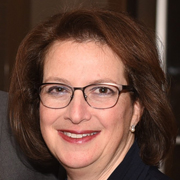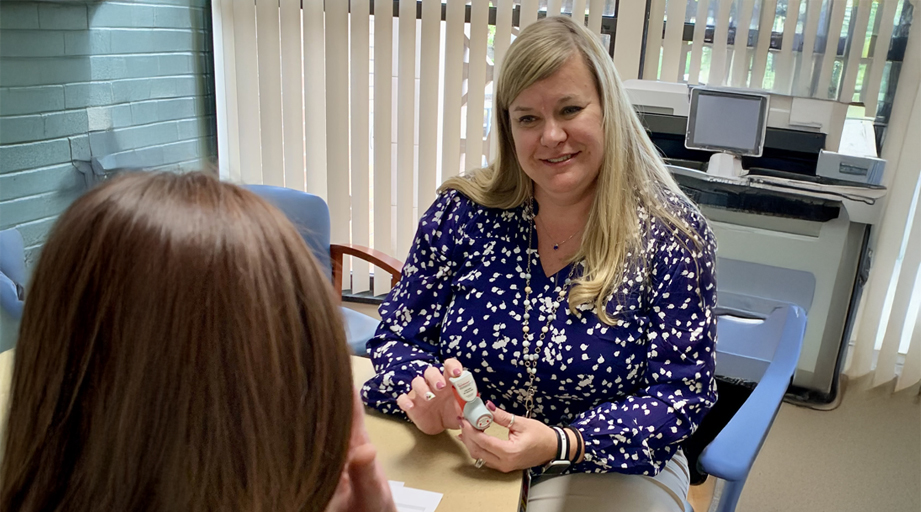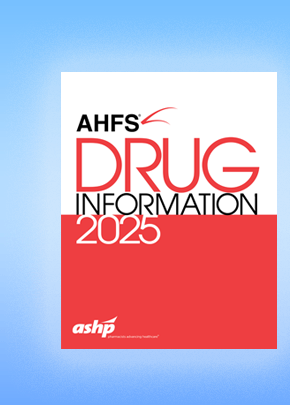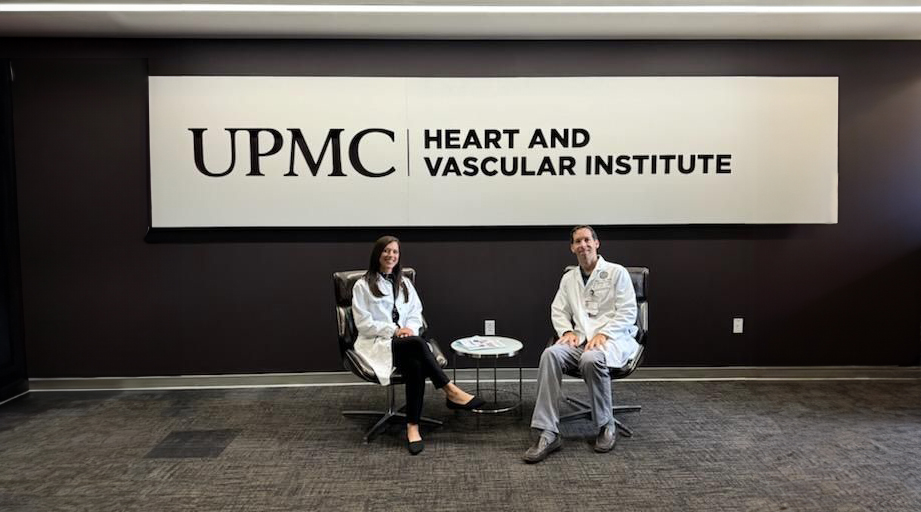
Pharmacists and nurses work together on today's most pressing health challenges - from managing heart failure to deprescribing in palliative care to tackling obesity in pre-transplant patients. The Collaborative Care Grant for Nurses and Pharmacists from the ASHP Foundation and American Nurses Foundation recognizes the potential impact of this interdisciplinary teamwork on improving healthcare outcomes.
Optimizing Heart Failure Meds
At UPMC Presbyterian Hospital, the grant program helped fund the creation of a medication optimization clinic (MOC) for those with heart failure with reduced ejection fraction.
“It made a lot of sense to bring together our collective expertise to manage these patients to get them on more optimal medications,” said James Coons, a clinical pharmacist in cardiology at UPMC Presbyterian Hospital.
Coons, an ASHP member and professor at the University of Pittsburgh School of Pharmacy, worked with nurse practitioner and longtime collaborator, Jennifer Kliner, on the project.
The pair was trying to address a problem that emerged during the COVID-19 pandemic: Patients with heart failure had trouble seeing their cardiologists regularly for medication adjustments.
Now, cardiologists refer patients to the MOC, launched in July 2020, to help them get optimal goal-directed medical therapy (GDMT) — a combination of four classes of medications to ease symptoms and improve clinical outcomes. Once enrolled, Coons and Kliner or another advanced practice provider conduct an initial visit and up to 11 additional weekly visits by phone until a patient’s medication regimen is optimized. Patients are then referred back to their cardiologist and their updated medication list is added to the electronic health record.
Coons and Kliner used funding from the ASHP Foundation and the American Nurses Foundation’s Collaborative Care Grant for Nurses and Pharmacists to launch the MOC and purchase home blood pressure cuffs and scales for 600 patients to collect data needed for titrating medications.
“It’s hard enough to get patients to drive into a big city and major center for appointments with the cardiologist, let alone come back every few weeks for medication adjustment,” Kliner said. “That’s where we thought if we could do this in a structured, aggressive approach, we could get patients on therapy quicker, and they wouldn’t fall through the cracks.”
They started with six patients at one UPMC site and later increased to eight sites across the UPMC system, with 12 advanced practice providers conducting about 100 patient visits a week. They also incorporated cardiothoracic surgery patients and those from the health system’s valve and adult congenital heart disease clinics.
Remarkable results
Through their collaboration, Coons and Kliner created the policies and guidelines for each medication used in the clinic, and he and Kliner both see patients. Additionally, Coons serves as the pharmacist for the clinic and is available to answer medication questions.
To assess their results, they reviewed patient records from 206 patients seen in the MOC and 412 patients who received usual care. Patients in the usual care group were threefold more likely to be hospitalized for heart failure than those seen in the MOC. The researchers found that 49% of MOC patients had received quadruple therapy GDMT, compared with just 4% of those who received usual care.
These results were published last year in the American Journal of Cardiology.
“I would encourage people to think about opportunities to collaborate across disciplines,” Coons said. “This really highlights the synergy that exists between pharmacists and nurses. There’s a tendency for people to operate in silos. That’s the nature of how a lot of clinics sometimes work. But there’s so much expertise and knowledge to be shared and completely different skill sets that can mesh very well and lead to these types of improvements, novel pathways, and innovations in services.”
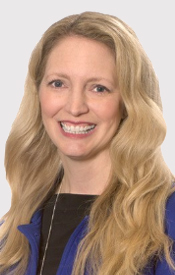
A Successful PATCH
At MedStar Health in the greater Washington, D.C., area, pharmacist Kathryn Walker and nurse colleague Christine Marie Hallman also benefited from a Collaborative Care Grant for Nurses and Pharmacists. They used it to establish a team-based deprescribing assessment for their community-based palliative care program, called PATCH (PAlliative Telehealth Connecting to Home).
Walker, an ASHP member and assistant vice president for MedStar, developed PATCH with the idea to better support patients initially seen in the hospital for palliative care and then sent home. Clinical pharmacists work as a team with nurse practitioners, physicians, clinical social workers, and chaplains to monitor home-based patients, who are outfitted with tablets for video visits or educational videos, as well as equipment like blood pressure cuffs and pulse oximeters.
With grant funds, Walker and Hallman looked at how adding screening for social determinants of health — conditions in which people work, live, and age — can contribute to more thoughtful deprescribing of excess medications.
“Often, patients who come home from the hospital have 25 medications they’re paying for, and they’re also at risk for side effects,” Walker said. “If the benefit is not there based on their life expectancy or goals of care, and they won’t receive the benefits, then it doesn’t make sense for them to continue to take them.”
Social determinants of health can add insight, she said. For example, if a patient has difficulty affording food or housing, deprescribing could have added bonuses of freeing up funds normally spent on medications for other necessities and reducing hardship on family caregivers tasked with medication administration. With a workflow now in place to continue, they have trained the palliative care team and begun collaborations with Lauren Bangerter, scientific director for MedStar’s Health Economics Aging Research Institute, to monitor outcomes. They also engaged a community advisory board to develop appropriate survey questions for patients and families to assess the program’s impact.

Effective Weight Loss Program
Pharmacist Evan Sisson and nurse practitioner colleague Dana Burns of Virginia Commonwealth University (VCU) in Richmond, Virginia, received a Collaborative Care Grant for Nurses and Pharmacists this year to develop an interprofessional weight loss management program for patients awaiting kidney transplants.
Sisson and Burns, who often collaborate in VCU’s endocrine diabetes clinic, had received several referrals for patients awaiting kidney transplants with uncontrolled diabetes. The transplant director advocated they address all the patients’ metabolic conditions, not just glycemic control but also heart health and weight.
“Patients who have a body-mass index (BMI) greater than 40 are not eligible for a kidney transplant,” said Sisson, professor and vice chair of practice and service in the Department of Pharmacotherapy and Outcomes Science and assistant director of the Center for Pharmacy Practice Innovation. “The closer they are to a healthy weight — a BMI of 25 or less — the better the potential for a positive transplant outcome.”
With grant funds, Sisson and Burns are establishing a structured weight loss education program for patients, available in person or by telehealth, to help them become eligible for a kidney transplant. They will also supply patients with scales to weigh themselves at home, and continuous glucose monitors to provide daily feedback on their lifestyle choices. They already have a list of about 70 patients ready to start.
“There are many ways that pharmacy and nursing can work together,” Sisson said. “There are behavioral components to weight loss and metabolic components. There’s education that needs to happen, but there’s also drug therapy that may help. From a pharmacy-nursing standpoint, we need to assess, ‘Why is this person not losing weight? What can we do from an education standpoint to help people identify barriers in their path?’ Sometimes there are social barriers related to food access; sometimes it’s related to underlying pathophysiology and selecting the best medicine for each individual.”
For more information about the grant, see Collaborative Care Grant for Nurses and Pharmacists.

